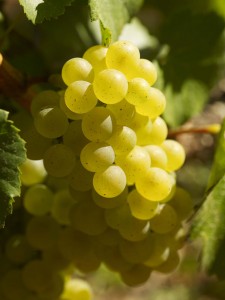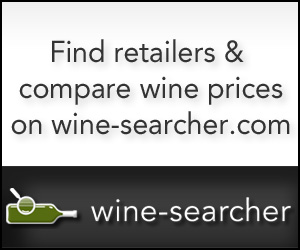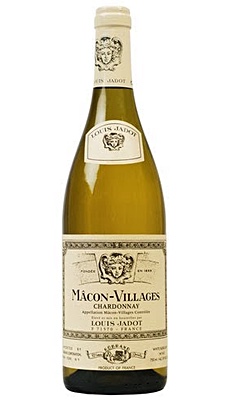If your wine memory goes back far enough to remember the days when “Anything but Chardonnay” was a popular slogan, raise your hand.
Explore Wine-Searcher
You’ll often see us offering links to Wine-Searcher.com, for a very simple reason: Wine-Searcher.com is the place to go online if you want to find where to buy a particular wine that interests you. But as Wine-Searcher.com has evolved over the years, it has turned into so much more. It’s well worth a visit just to discover its many features, including its popular list of the world’s current ten best value wines!
Okay, that was in the late 1980s and early ’90s, mostly, so if you’re a Millennial or younger, this one may have passed you by. But we had reasons. Reasons, I tellya!
Chardonnay carries a noble heritage. An ancient variety that earned its crown in Burgundy as one of the world’s finest white wine varieties, it’s been grown there at least since medieval times. Recent DNA studies by the wine gurus at the University of California at Davis reveal that it originally emerged as a cross among Burgundy’s great red Pinot Noir and the now-rare white grape Gouais Blanc.
So Chardonnay is ancient and arguably respected. In Burgundy it makes some of the world’s best white wines. It is the world’s most popular white wine, and the fifth most widely planted variety of any color. But Chardonnay has arguably had more ups and downs in the past 50 years than it had in the seven preceding centuries.
What happened? Well, one big kick upward came with the famous Judgement of Paris, a publicity stunt primarily remembered because a brace of Napa Valley Cabernet Sauvignons bested a squad of top Bordeaux in a head-to-head blind tasting, bringing Napa to the world’s attention with a boost that’s never faltered.
But there were white wines at the Judgement of Paris too, and Chateau Montelena’s 1973 Chardonnay was judged better than the white Burgundies from Montrachet and Meursault.
Quickly Chardonnay became popular throughout the world. Plantings expanded in California and around the globe: New Zealand and Australia, Chile and Argentina, Northern Italy, Eastern Europe, even Languedoc in Southern France got into the act. Varietal Chardonnay cropped up everywhere, and a good share of it was aimed at the newly Chard-savvy American market.
Before we knew it, faux American labels like domestic “chablis” and “burgundy” were replaced with varietal Chardonnay, and with-it wine enthusiasts quickly learned to request “a glass of Chardonnay” in favor of “a glass of white wine.” Chardonnay was in.
So what went wrong? Well, here’s a truth about Chardonnay: To make it great, you have to make it well. Prudent, stingy practices in the vineyard matter. Classic practices focus on concentrating flavor and sugars in the fruit. Vineyard location matters, too, as do cool climate, and measured sun exposure. It’s no coincidence that Burgundy’s greatest white-wine vineyards – the Côte d’Or – lie on eastward-facing hills.
Once you’ve got the grapes, wine-making tradition and expertise matter; so do tried and tested yeast strains that contribute their own flavor to the wines. And once the grapes are squeezed and the wine is made, barrels matter. Subtle oak from quality (read “expensive”) barrels and good judgement in how long to use them all make a difference.
All these things show us why the best white Burgundies – which don’t even need to place the word “Chardonnay” on the label – and the best Chardonnays from California and elsewhere are limited in production and costly in price.
Plain, un-oaked Chardonnay can be an amiable wine, but it’s actually on the neutral side, with natural flavors ranging from warm tropical flavors, pineapple and fig, to cooler citrus and apples, often with chalky, stony mineral back notes that some attribute to terroir and the soil but may just as likely trace to yeast character. Relatively modest un-oaked white Burgundies from the Maconnais, like today’s featured tasting, Louis Jadot 2018 Mâcon-Villages Chardonnay, come up strongly on the tart green-apple and citrus end of the scale.
Producers, particularly those focused on quantity and profit, quickly learned to tweak yeasts, encourage malolactic fermentation, which converts tart, appley malic acid to gentle, soft lactic acid, and kick up the oak treatment – not necessarily with the most pricey barrels – to achieve full-bodied, buttery flavors. When some of the new wave of critics that was coming up at about the same time loved these flavors and raved about them, prices shot up, and a lot of us started yelling “Anything but Chardonnay.”
But here’s the good news. Burgundy producers, and some quality producers everywhere, started giving Chardonnay the respect that it deserves. And nowadays, with a little care in the shopping, it’s easy to find enjoyable Chardonnay again.
This week we look at a modest, unoaked Macon-Villages from the large but respected producer Louis Jadot. Next week, with any luck, I’ll come back with an interesting American Chardonnay.
What’s your take on Chardonnay these days? Have you emerged from the “ABC” cave? Tell us about it, and bring your tasting reports, as our WineLovers Discussion Group talks about the grape in all its forms in our September Wine Focus: Back to Basics with Chardonnay.
Today’s Sponsor:
Explore Wine-Searcher
You’ll often see us offering links to Wine-Searcher.com, for a very simple reason: Wine-Searcher.com is the place to go online if you want to find where to buy a particular wine that interests you. But as Wine-Searcher.com has evolved over the years, it has turned into so much more. It’s well worth a visit just to discover its many features, including its popular list of the world’s current ten best value wines!
Today’s Tasting Report
Louis Jadot 2018 Mâcon-Villages Chardonnay ($17.99)
This fresh young Chardonnay is a clear bright straw color in the glass; its Diam technical cork comes out with a slight hiss that foretells a faint touch of carbonation as a slight prickle on the palate. Fresh, ripe apples dominate the aroma, with a subtle back note of wildflowers. Tart apples frame the flavor in a briskly acidic medium-bodied wine that offers a good expression of oak-free Chardonnay. Bright, almost sour lemony acidity lingers with tart cooking apples in the finish, and a hint of stony minerality adds complexity as the wine warms in the glass. U.S. importer: Kobrand Corp., NYC. (Sept. 19, 2019)
FOOD MATCH: The back label suggests shellfish, crab cakes, or goat cheese, and those all make sense. We tried it with a caprese salad of tomatoes, fresh mozzarella, and basil.
WHEN TO DRINK: There’s no rush on the one hand, but I don’t see any real benefit from cellaring. Drink up over the next three years or so.
VALUE:
My $18 local price was a bit spendy in contrast with Wine-Searcher.com’s $14 average retail; it’s widely available around the U.S. in the $11-$12 range. Still, it’s good enough that I’m not upset about the toll.
WEB LINK
Here’s a short fact sheet from Louis Jadot.
FIND THIS WINE ONLINE:
Find vendors and compare prices for Louis Jadot Mâcon-Villages Chardonnay on Wine-Searcher.com.
Read more about Mâcon-Villages and browse an extensive list of its wines and their vendors: Browse this Wine-Searcher link.
More affordable wines
Want tips to still more good, inexpensive wines? Here are Wine-Searcher links to vendors and prices for a bunch more wines for $10 or less that I’ve told you about during the past year or two. Please tell us about your favorites!
Wine Forum and Social Media
If you have questions, comments or ideas to share about today’s article or wine in general, you’re always welcome to drop by our online WineLovers Discussion Group, the Internet’s first and most civil online community.
Discussions are open for public viewing, but you must register to post. If you’re a Facebook user, you can join our forum with a single click! All you need to do is visit the forum and click “Social Login” at upper right.
We’d also be delighted to have you visit and “Like” our WineLovers Facebook Page. This way you can get Facebook notifications when there’s a new The 30 Second Wine Advisor issue or a topic of particular interest on the WineLovers Discussion Group (WLDG).
Subscriptions and Administrivia
Unsubscribe:
We’re sorry if you must leave us, but simply click the “unsubscribe” link at the bottom of your Email edition to be instantly removed from the mailing list.
Change address:
The quickest and easiest way to change your email address is simply to unsubscribe from your old address and register again from the new one: Subscribe to The 30 Second Wine Advisor (free).
Archives:
Read nearly 20 years of past articles in the Wine Advisor Archives.
Sponsorship Opportunities:
For information, email Robin Garr at wine@wineloverspage.com







